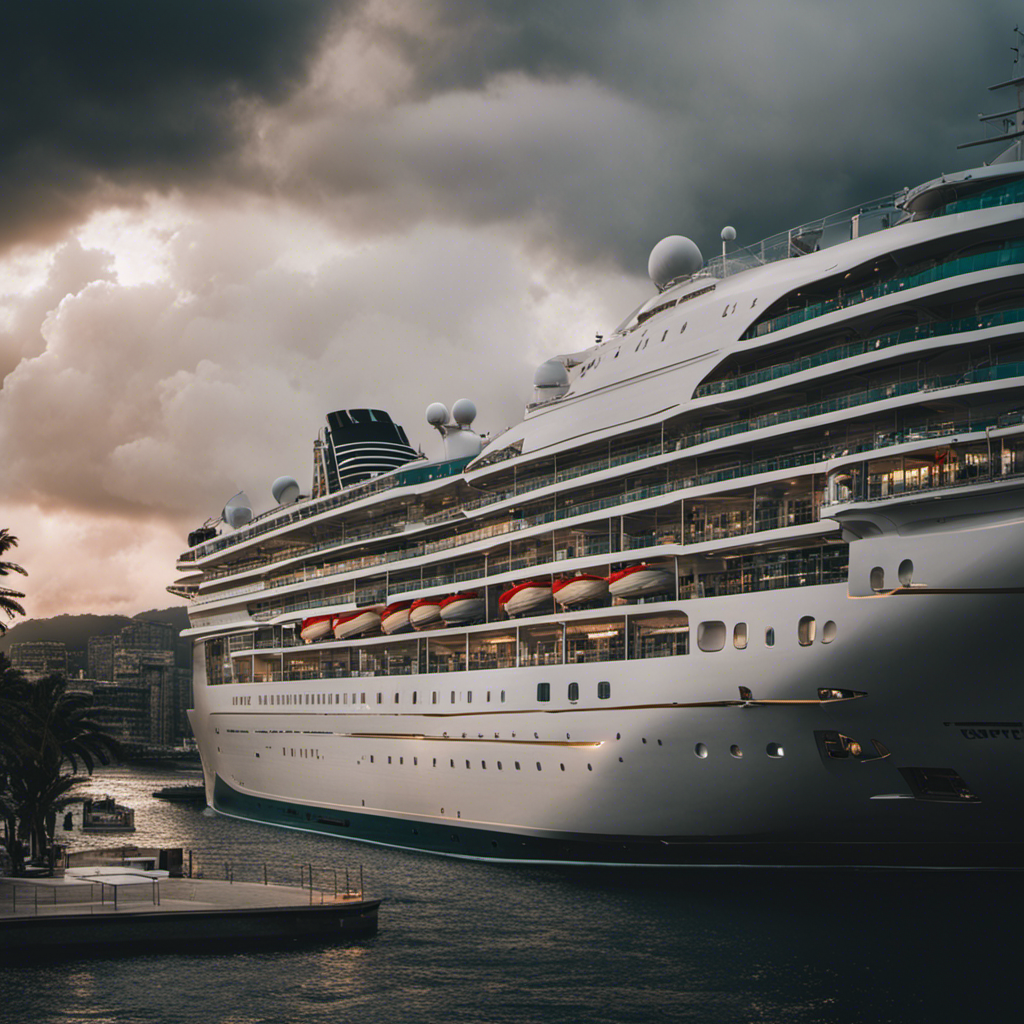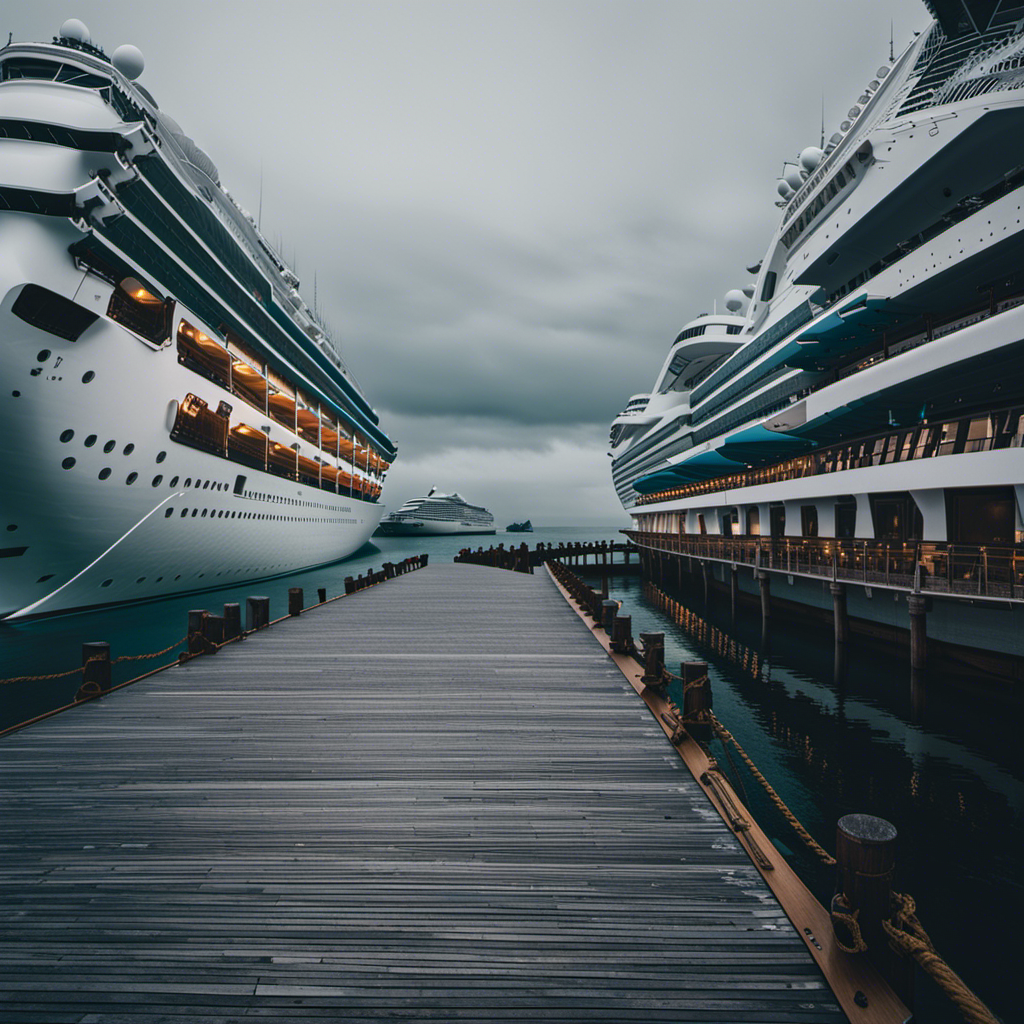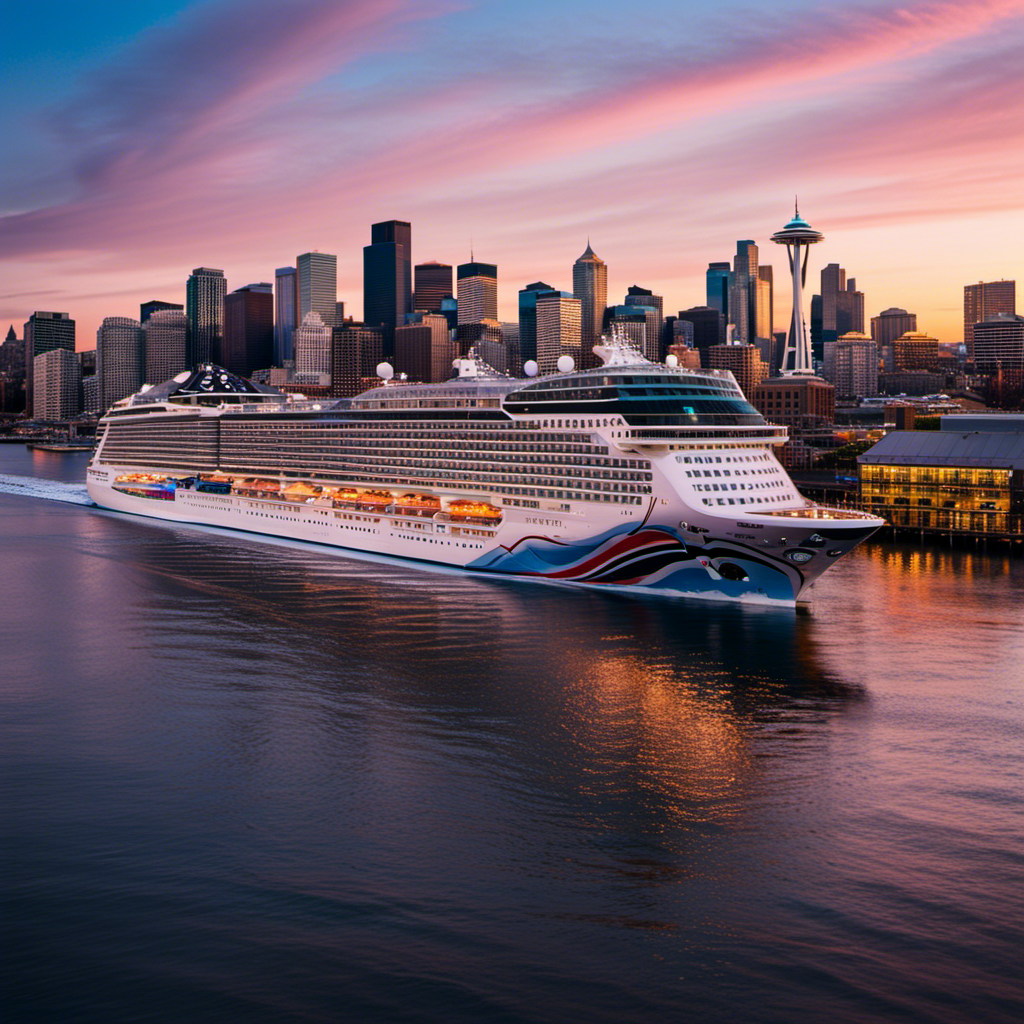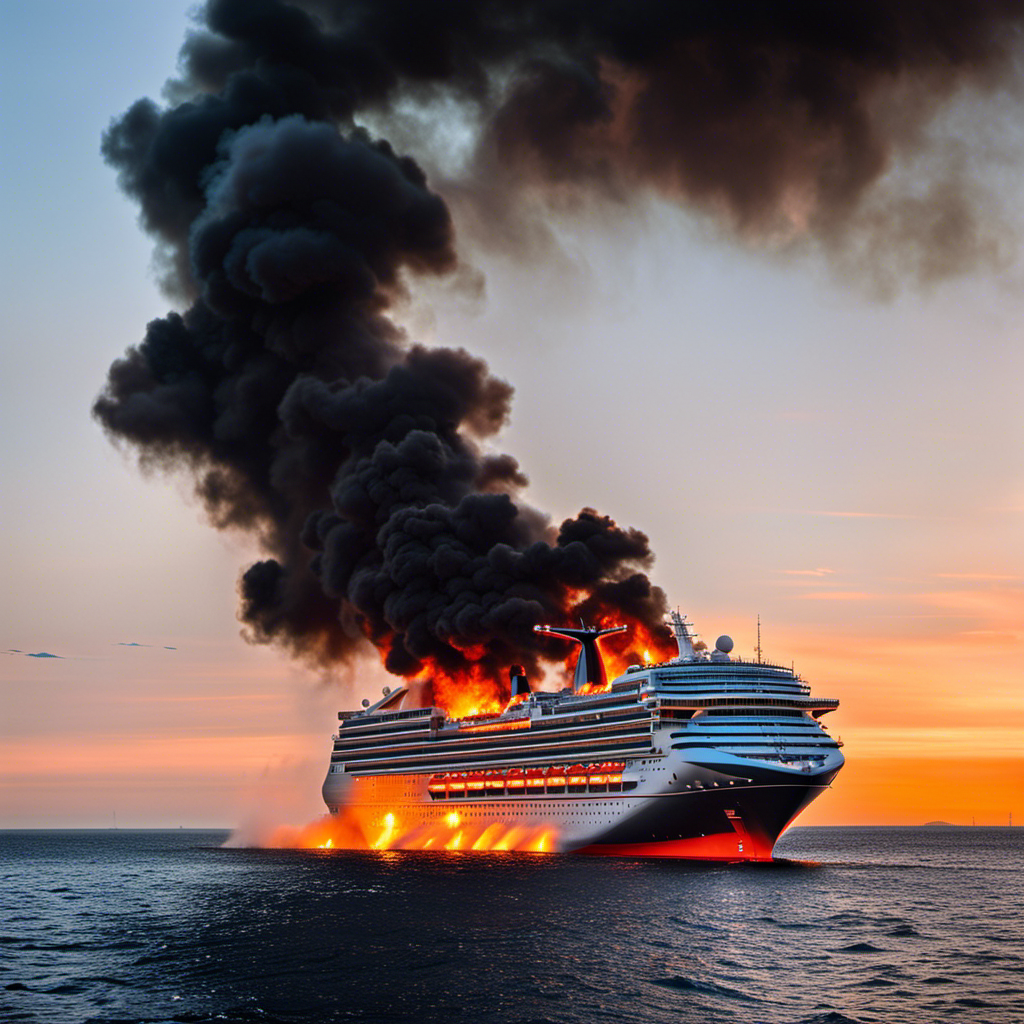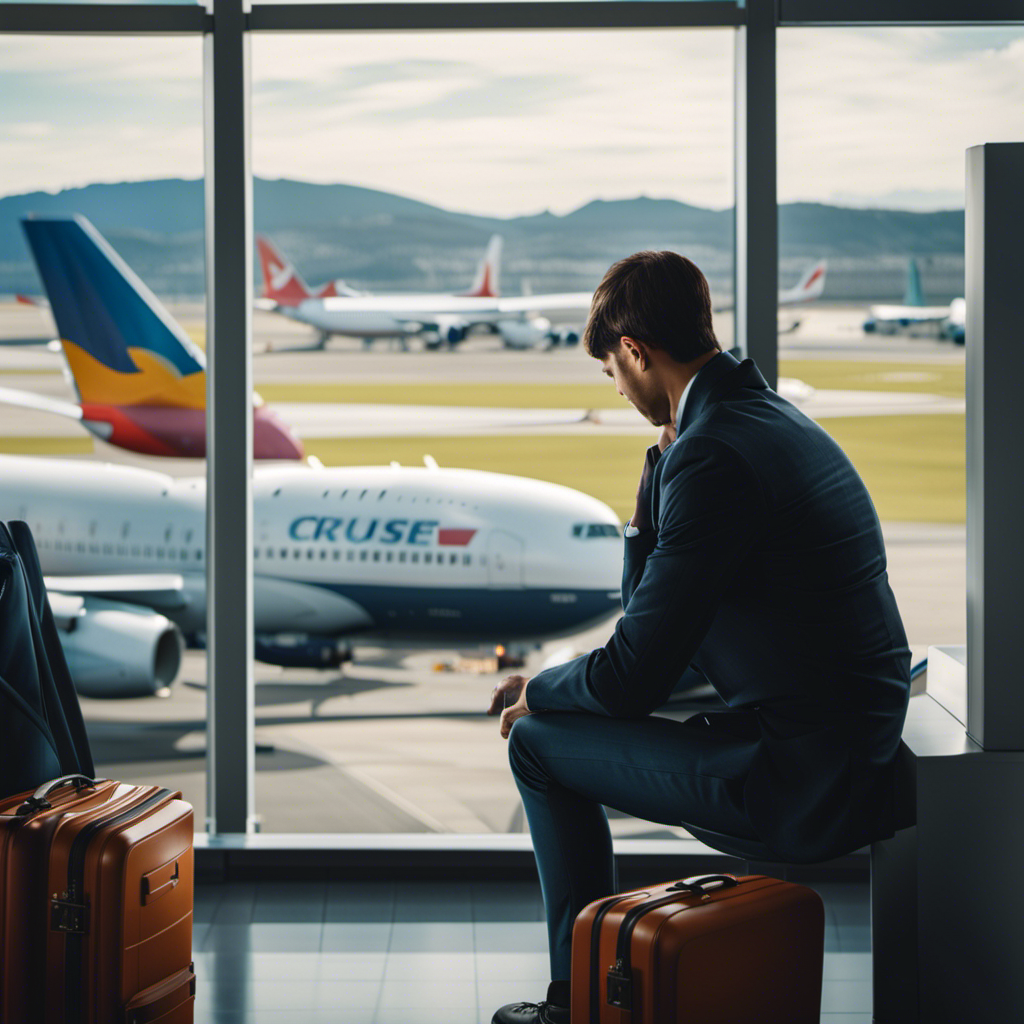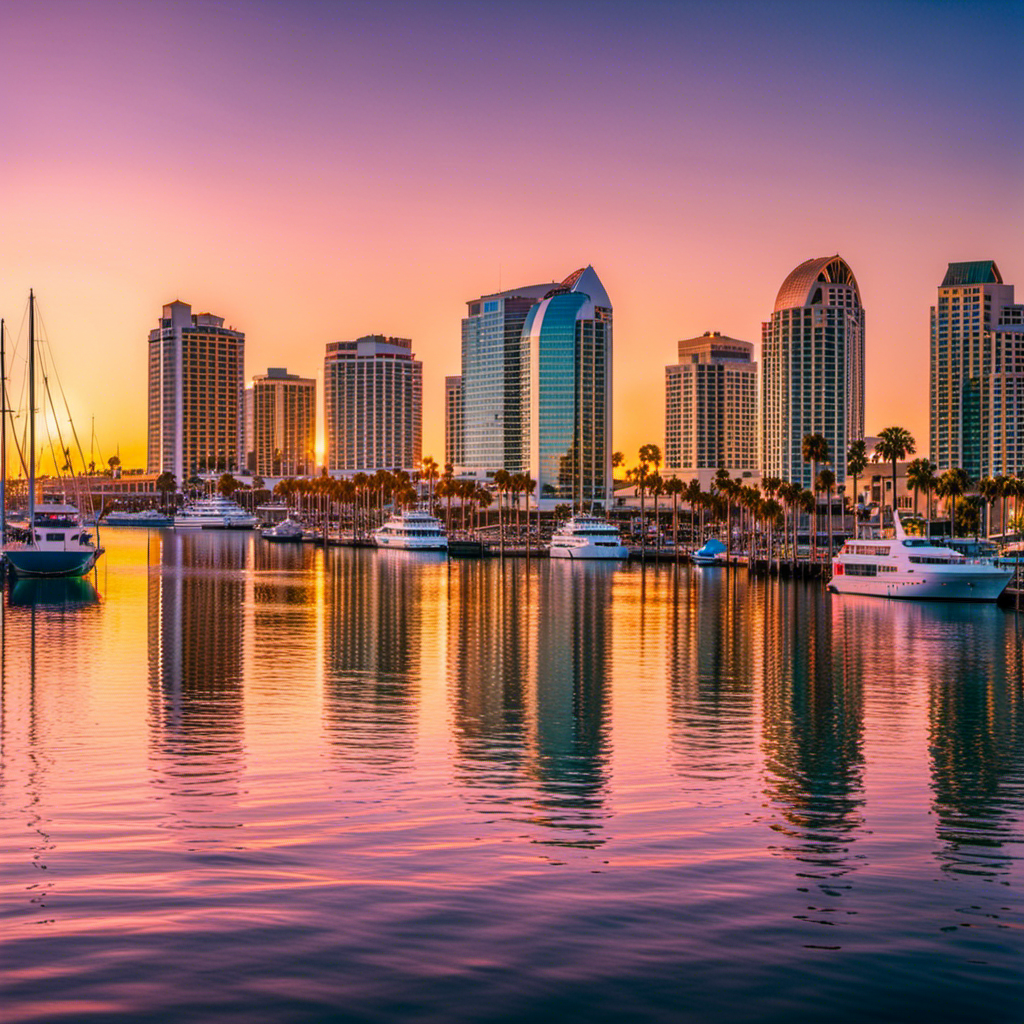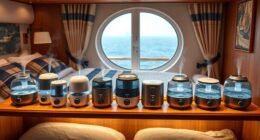Setting sail on my voyage across the turbulent waters of the cruise industry, a storm is on the horizon, threatening to engulf our ships as the Omicron variant surfaces.
Recent data from the CDC reveals an alarming spike in positive cases on cruise ships, forcing major cruise lines to take swift action. Mandatory indoor masking policies have been implemented for vaccinated passengers, but the uncertainty looms large.
With vaccination and testing protocols in place, the industry battles to weather this storm and protect the future of cruises.
Key Takeaways
- The cruise industry is experiencing growing concerns and impact due to the Omicron variant, with an increase in the number of ships possibly seeing cases and major cruise lines implementing mandatory indoor masking policies.
- The Symphony of the Seas, a cruise ship, experienced 48 positive COVID tests, with 98% of those testing positive being fully vaccinated. It is unclear if these cases were from the Omicron variant.
- Vaccination and testing protocols on cruise ships include mandatory vaccination for passengers 12 and older, mandatory vaccination for crew members with a booster dose, and the requirement for vaccinated guests to present a negative COVID test before boarding.
- The Omicron variant poses a challenge as it spreads quickly and can evade vaccines for infection. There have already been reports of at least one Omicron case on a Norwegian Cruise Line ship.
Spike in Positive Cases on Cruise Ships
I’ve noticed a recent spike in the number of ships showing possible cases according to CDC data. This spike is having a significant impact on travel and passenger safety within the cruise industry.
Major cruise lines have been implementing mandatory indoor masking policies to help mitigate the spread of the virus. Despite these measures, the number of ships possibly seeing cases continues to rise.
The attention of the cruise industry is now focused on the impact of the Omicron variant and its implications for the future of cruises. It is still unclear how this variant will further impact the industry and its ability to ensure passenger safety.
However, with the implementation of vaccination and testing protocols on cruise ships, the industry is working diligently to prevent outbreaks and protect passengers from the risks posed by the Omicron variant.
Implementation of Mandatory Indoor Masking Policies
Implemented by major cruise lines, mandatory indoor masking policies have been established in response to growing concerns and impact of the Omicron variant. These policies aim to enhance passenger safety and minimize the risk of COVID-19 transmission onboard. However, the implementation of these policies comes with its own set of challenges. One of the main challenges is ensuring passenger compliance. It can be difficult to enforce mask-wearing consistently across all areas of the ship, especially in crowded spaces like dining areas and entertainment venues. Additionally, some passengers may resist or refuse to wear masks, which poses a potential risk to others. Cruise lines are working diligently to address these challenges and promote passenger compliance through clear communication, signage, and staff training. By prioritizing the health and safety of passengers, the cruise industry is taking proactive measures to navigate the impact of the Omicron variant and ensure a safe and enjoyable cruising experience for all.
| Implementation Challenges | Passenger Compliance |
|---|---|
| Enforcing mask-wearing consistently | Clear communication and signage |
| Addressing resistance or refusal to wear masks | Staff training on promoting compliance |
| Minimizing risk in crowded spaces | Proactive measures to prioritize health and safety |
Uncertainty Surrounding the Impact on Future Cruises
The uncertainty surrounding the future of cruises amidst the Omicron variant is causing apprehension and speculation within the industry. The impact on tourism and cruise industry recovery is a major concern.
Recent data shows a spike in the number of ships showing possible cases, leading to major cruise lines implementing mandatory indoor masking policies. The attention of the cruise industry is focused on the impact of Omicron, as the full extent is yet to be determined. Positive cases on Symphony of the Seas, one of the largest cruise ships, have been reported, but represent less than 1% of those on board. Vaccination and testing protocols are in place to mitigate the spread of the virus.
While outbreaks have occurred in the past, the Omicron variant poses a new challenge with its ability to spread quickly and potentially evade vaccines. The cruise industry is responding by implementing stricter safety measures, such as indoor mask policies.
The future of cruises remains uncertain as the industry navigates the challenges posed by the Omicron variant and strives for a full recovery.
Vaccination and Testing Protocols on Cruise Ships
Passengers 12 and older must be vaccinated and provide a negative COVID test before boarding a cruise ship. These vaccination and testing protocols are crucial in ensuring the safety and well-being of everyone on board. The effectiveness of vaccinations in preventing COVID-19 transmission and reducing the severity of the illness has been well-documented. According to recent data, 98% of positive cases on the Symphony of the Seas were among fully vaccinated individuals. This highlights the importance of vaccination in mitigating the spread of the virus. Additionally, testing requirements before boarding the ship provide an added layer of protection, ensuring that only those who test negative for COVID-19 are allowed to embark. These protocols are essential to maintaining a safe environment for passengers and crew members, and to prevent outbreaks of the Omicron variant on cruise ships.
| Vaccination and Testing Protocols on Cruise Ships |
|---|
| – Passengers 12 and older must be vaccinated |
| – Vaccinated guests must present a negative COVID test before boarding |
| – Crew members are required to be vaccinated, including a booster dose |
| – Unvaccinated kids must test negative before the cruise and at the terminal |
Response of the Cruise Industry to the Omicron Variant
As a cruise ship passenger, I am closely monitoring the response of the cruise lines to the Omicron variant and their efforts to ensure the safety of passengers and crew members.
The cruise industry has been proactive in implementing measures to address the concerns raised by the emergence of the Omicron variant. Major cruise lines such as Carnival, Royal Caribbean, and Norwegian Cruise Line have implemented mandatory indoor masking policies for vaccinated passengers. These policies aim to reduce the risk of transmission onboard and enhance public confidence in cruises.
Additionally, vaccination and testing protocols have been strengthened, with passengers 12 and older required to have the vaccine and present a negative COVID test before boarding. Crew members are also required to be vaccinated, including a booster dose.
The cruise industry’s preparedness and swift response to the Omicron variant are crucial in building and maintaining public confidence in the safety of cruises.
Frequently Asked Questions
Are There Any Specific Cruise Ships That Have Been Affected by the Omicron Variant?
There have been reports of cruise ships experiencing positive COVID-19 cases, but it’s unclear if they are specifically related to the Omicron variant. The impact of the variant on the cruise industry is still being determined.
How Many Cases of the Omicron Variant Have Been Reported on Cruise Ships so Far?
There have been reports of cases of the Omicron variant on cruise ships, but the exact number is unknown. The transmission of the variant is a concern for the cruise industry and its impact is yet to be determined.
What Are the Current Vaccination and Testing Protocols for Passengers and Crew Members on Cruise Ships?
Vaccination requirements and testing protocols for passengers and crew members on cruise ships ensure safety. Passengers 12+ need the vaccine, while crew members must be vaccinated with a booster dose. Negative COVID tests are required for boarding.
How Effective Are the Vaccines in Preventing Infection From the Omicron Variant?
The vaccines have shown effectiveness in preventing infection from the Omicron variant, but breakthrough infections can still occur. It’s important to continue monitoring the impact of the variant and adjust protocols accordingly.
Are There Any Plans for the Cruise Industry to Implement Additional Safety Measures in Response to the Omicron Variant?
There are currently no plans for the cruise industry to implement additional safety measures in response to the Omicron variant. However, major cruise lines have already implemented mandatory indoor masking policies to mitigate the spread of the virus.
Claire, a creative soul with an unquenchable thirst for storytelling, is an integral part of the Voyager Info team. As a dedicated writer, she weaves captivating narratives that transport readers to enchanting cruise destinations and beyond.
Claire’s love affair with writing began at an early age when she discovered the magic of words and their ability to craft worlds and emotions. Her innate curiosity led her to explore various literary genres, but it was travel writing that truly captured her heart. Drawing inspiration from her own globetrotting adventures and encounters with diverse cultures, Claire embarked on a journey to become a travel writer par excellence.

